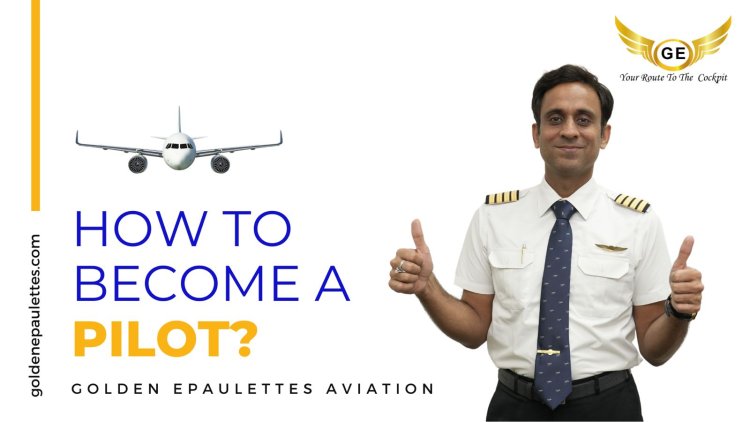Discover the types of pilot licenses available and how to obtain them.
If you've ever dreamed of flying high and exploring the skies, you're not alone. The journey to becoming a pilot is exciting, rewarding, and full of learning.

Discover the Types of Pilot Licenses Available and How to Obtain Them
If you've ever dreamed of flying high and exploring the skies, you're not alone. The journey to becoming a pilot is exciting, rewarding, and full of learning. But before you soar through the clouds, it's essential to understand the different types of pilot licenses available and how to obtain them. This guide will walk you through everything you need to know about pilot licensing and help you answer the popular question, “how to become a pilot.”
Understanding Pilot Licenses
Pilot licenses, also known as pilot certificates, are credentials issued by aviation authorities that permit individuals to operate an aircraft. Each license comes with specific privileges, requirements, and restrictions. The type of license you need depends on your aviation goals, whether you want to fly for fun, as a career, or for specialized operations.
Types of Pilot Licenses
1. Student Pilot License (SPL)
The Student Pilot License is the starting point for anyone beginning their aviation journey. It allows you to fly under the supervision of a certified flight instructor.
- Eligibility: Minimum age of 16 years.
- Requirements: Medical certificate and basic aviation knowledge.
- Privileges: Permits solo flights with instructor approval.
- How to Obtain: Enroll in a flight school, complete the required training, and pass a medical examination.
2. Private Pilot License (PPL)
The Private Pilot License is the most popular license for recreational flying and serves as the foundation for advanced certifications.
- Eligibility: Minimum age of 17 years.
- Requirements: Ground school training, 40 hours of flight time (20 with an instructor), and passing written, oral, and practical exams.
- Privileges: Allows you to fly solo or with passengers but not for commercial purposes.
- How to Obtain: Complete training at a certified flight school, clear the exams, and maintain a valid medical certificate.
3. Commercial Pilot License (CPL)
For those aiming for a career in aviation, the Commercial Pilot License is essential.
- Eligibility: Minimum age of 18 years.
- Requirements: 250 hours of flight time, ground school training, and passing written and practical tests.
- Privileges: Allows you to earn money for flying, such as aerial tours, cargo transportation, or agricultural operations.
- How to Obtain: Complete an accredited training program and pass the required exams.
4. Airline Transport Pilot License (ATPL)
The highest level of pilot certification, the ATPL is required for airline captains and high-level aviation professionals.
- Eligibility: Minimum age of 23 years.
- Requirements: 1,500 hours of flight time, advanced training, and passing rigorous exams.
- Privileges: Permits you to act as the pilot-in-command for scheduled air carriers.
- How to Obtain: Obtain prior licenses (PPL and CPL), gain extensive flight experience, and clear the examinations.
5. Sport Pilot License (SPL)
An entry-level license for recreational flying under simplified requirements.
- Eligibility: Minimum age of 17 years.
- Requirements: 20 hours of flight time, including 15 hours with an instructor.
- Privileges: Fly light-sport aircraft during daytime and good weather conditions.
- How to Obtain: Complete necessary training and pass a practical test.
6. Recreational Pilot License (RPL)
A step above the Sport Pilot License, offering more privileges.
- Eligibility: Minimum age of 17 years.
- Requirements: 30 hours of flight time, including solo training.
- Privileges: Allows limited cross-country flying but with certain restrictions.
- How to Obtain: Complete the training and pass the knowledge and flight tests.
7. Certified Flight Instructor (CFI)
This license allows you to teach others how to become pilots.
- Eligibility: Must hold a Commercial Pilot License or higher.
- Requirements: Additional instructor training and exams.
- Privileges: Provides training and endorsements for other pilots.
- How to Obtain: Complete a flight instructor course and pass the exams.
How to Become a Pilot: The Step-by-Step Process
- Determine Your Aviation Goals: Decide whether you want to fly recreationally or professionally.
- Choose the Right License: Based on your goals, select the appropriate license (PPL, CPL, ATPL, etc.).
- Select a Flight School: Research reputable flight schools that offer the training you need.
- Complete Ground School Training: Learn essential aviation theory, including aerodynamics, navigation, and weather.
- Gain Flight Experience: Accumulate the required flight hours under professional guidance.
- Pass Written and Practical Exams: Clear the exams to earn your desired license.
- Build Flight Hours: Continue training and build hours to upgrade your license if needed.
- Stay Current: Maintain your license with periodic reviews and renewals.
Costs Associated with Becoming a Pilot
The cost of becoming a pilot in India varies depending on the type of license and flight school you choose. On average:
- Private Pilot License (PPL): ₹10-15 lakhs
- Commercial Pilot License (CPL): ₹25-35 lakhs
- Airline Transport Pilot License (ATPL): Additional costs depend on training requirements.
Conclusion
Understanding how to become a pilot starts with choosing the right type of pilot license that aligns with your goals. From student pilot licenses to advanced ATPL certifications, each step requires dedication, proper training, and thorough preparation. As you embark on this exciting journey, ensure you follow the correct process, invest in quality training, and stay committed to your aviation dream.
What's Your Reaction?
















.jpg)